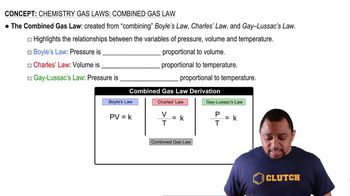Here are the essential concepts you must grasp in order to answer the question correctly.
Bond Length
Bond length is the average distance between the nuclei of two bonded atoms. It is influenced by factors such as atomic size, bond order, and the presence of lone pairs. In the case of carbon–carbon bonds, the length can vary depending on whether the bond is a single, double, or triple bond, with single bonds being the longest and triple bonds the shortest.
Recommended video:
Hybridization
Hybridization is the concept of mixing atomic orbitals to form new hybrid orbitals that can accommodate bonding. In the case of H2C (ethylene), the carbon atoms undergo sp2 hybridization, resulting in three sp2 hybrid orbitals that form sigma bonds and one unhybridized p orbital that can participate in pi bonding. This hybridization affects the bond angles and lengths in the molecule.
Recommended video:
Combination Reaction
A combination reaction, also known as a synthesis reaction, occurs when two or more reactants combine to form a single product. In the context of H2C molecules reacting, the combination of two ethylene molecules would lead to the formation of a larger hydrocarbon. The nature of the resulting bonds and the molecular structure will influence the predicted bond lengths in the product.
Recommended video:
 Verified step by step guidance
Verified step by step guidance

